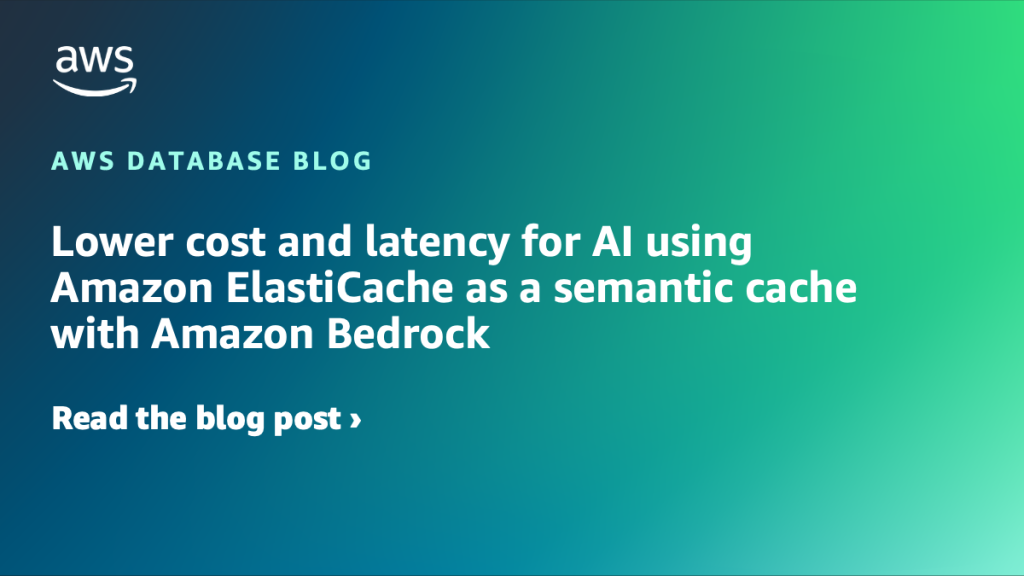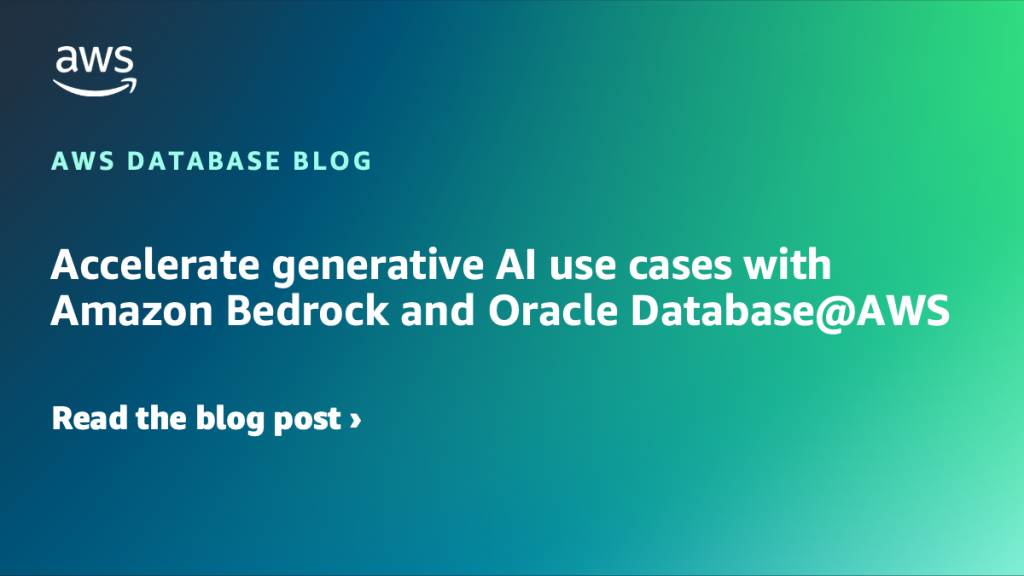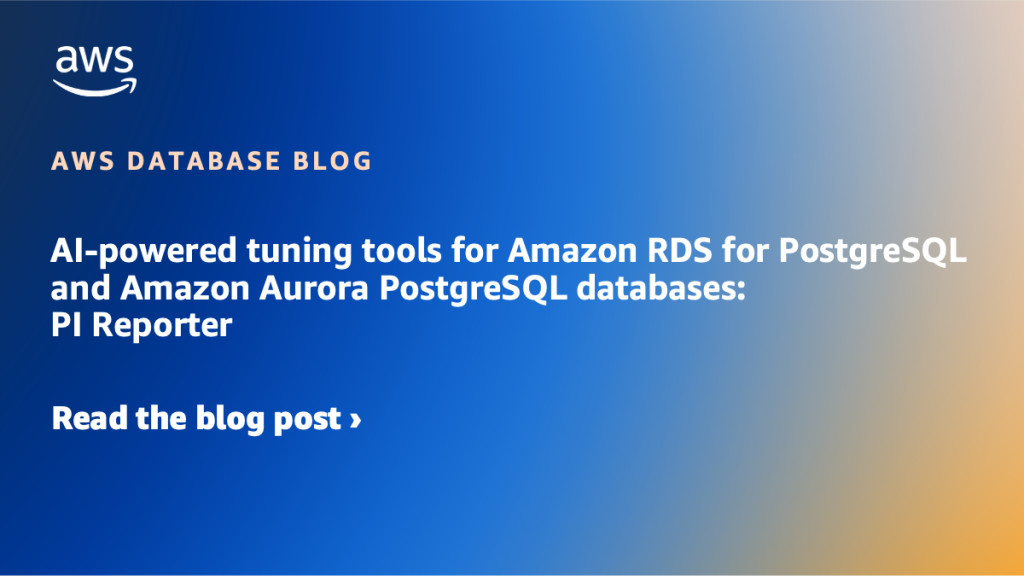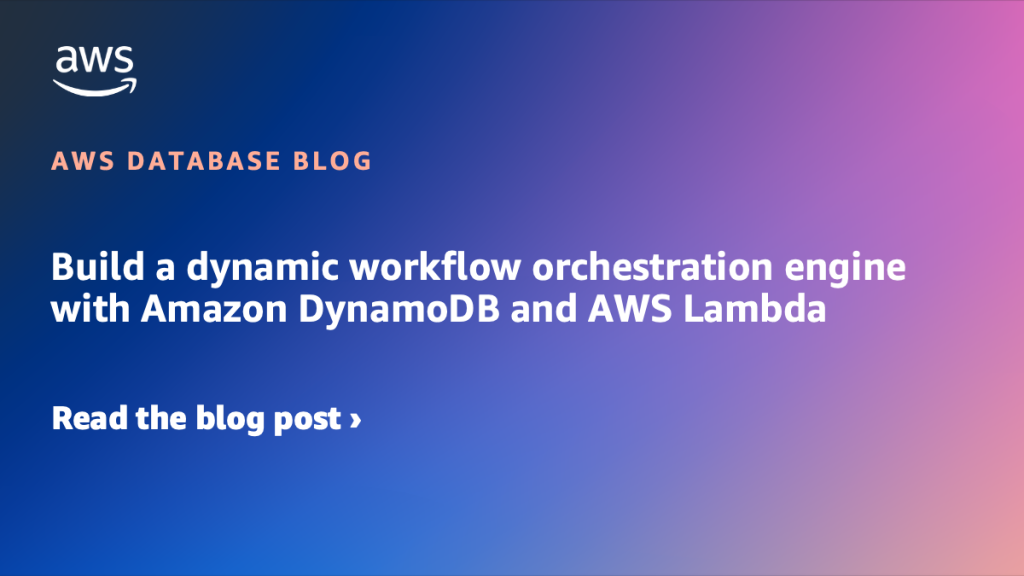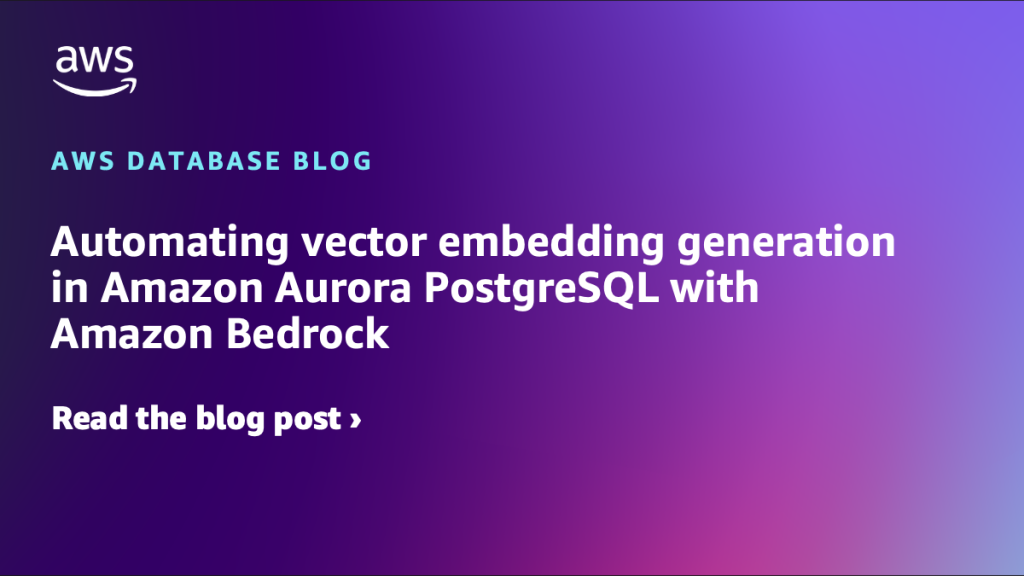AWS Database Blog
Category: Amazon Bedrock
Lower cost and latency for AI using Amazon ElastiCache as a semantic cache with Amazon Bedrock
This post shows how to build a semantic cache using vector search on Amazon ElastiCache for Valkey. As detailed in the Impact section of this post, our experiments with semantic caching reduced LLM inference cost by up to 86 percent and improved average end-to-end latency for queries by up to 88 percent.
Accelerate generative AI use cases with Amazon Bedrock and Oracle Database@AWS
In this post, we walk through the steps of integrating Oracle Database@AWS (ODB@AWS) with Amazon Bedrock for by creating a RAG assistant application using an Amazon Titan embedding model in Amazon Bedrock and vectors stored in Oracle AI Database 26ai.
AI-powered tuning tools for Amazon RDS for PostgreSQL and Amazon Aurora PostgreSQL databases: PI Reporter
In this post, we explore an artificial intelligence and machine learning (AI/ML)-powered database monitoring tool for PostgreSQL, using a self-managed or managed database service such as Amazon RDS for PostgreSQL and Amazon Aurora PostgreSQL.
Build a dynamic workflow orchestration engine with Amazon DynamoDB and AWS Lambda
In this post, I show you how to build a serverless workflow orchestration engine that uses Amazon DynamoDB and AWS Lambda. The complete implementation is available in a GitHub repository, which includes two fully functional examples that you can deploy and run immediately to see the orchestration engine in action.
Automating vector embedding generation in Amazon Aurora PostgreSQL with Amazon Bedrock
In this post, we explore several approaches for automating the generation of vector embedding in Amazon Aurora PostgreSQL-Compatible Edition when data is inserted or modified in the database. Each approach offers different trade-offs in terms of complexity, latency, reliability, and scalability, allowing you to choose the best fit for your specific application needs.
Beyond Correlation: Finding Root-Causes using a network digital twin graph and agentic AI
When your network fails, finding the root cause usually takes hours of investigations, going through correlated alarms that often lead to symptoms rather than the actual problem. Root-cause analysis (RCA) systems are often built on hardcoded rules, static thresholds, and pre-defined patterns that work great until they don’t. Whether you’re troubleshooting network-level outages or service-level degradations, those rigid rule sets can’t adapt to cascading failures and complex interdependencies. In this post, we show you our AWS solution architecture that features a network digital twin using graphs and Agentic AI. We also share four runbook design patterns for Agentic AI-powered graph-based RCA on AWS. Finally, we show how DOCOMO provides real-world validation from their commercial networks of our first runbook design pattern, showing drastic MTTD improvement with 15s for failure isolation in transport and Radio Access Networks.
Streamline code conversion and testing from Microsoft SQL Server and Oracle to PostgreSQL with Amazon Bedrock
Organizations are increasingly seeking to modernize their database infrastructure by migrating from legacy database engines such as Microsoft SQL Server and Oracle to more cost-effective and scalable open source alternatives such as PostgreSQL. This transition not only reduces licensing costs but also unlocks the flexibility and innovation offered by PostgreSQL’s rich feature set. In this post, we demonstrate how to convert and test database code from Microsoft SQL Server and Oracle to PostgreSQL using the generative AI capabilities of Amazon Bedrock.
Implement prescription validation using Amazon Bedrock and Amazon DynamoDB
Healthcare providers manage an ever-growing volume of patient data and medication information to help ensure safe, effective treatment. Although traditional database systems excel at storing patient records, they require complex queries to access information. By adding generative AI capabilities, healthcare providers can now use natural language to search patient records and verify medication safety, rather than writing complex database queries. In this post, I show you a solution that uses Amazon Bedrock and Amazon DynamoDB to create an AI agent that helps healthcare providers quickly identify potential drug interactions by validating new prescriptions against a patient’s current medication records.
Connect Amazon Bedrock Agents with Amazon Aurora PostgreSQL using Amazon RDS Data API
In this post, we describe a solution to integrate generative AI applications with relational databases like Amazon Aurora PostgreSQL-Compatible Edition using RDS Data API (Data API) for simplified database interactions, Amazon Bedrock for AI model access, Amazon Bedrock Agents for task automation and Amazon Bedrock Knowledge Bases for context information retrieval.
Build an AI-powered text-to-SQL chatbot using Amazon Bedrock, Amazon MemoryDB, and Amazon RDS
Text-to-SQL can automatically transform analytical questions into executable SQL code for enhanced data accessibility and streamlined data exploration, from analyzing sales data and monitoring performance metrics to assessing customer feedback. In this post, we explore how to use Amazon Relational Database Service (Amazon RDS) for PostgreSQL and Amazon Bedrock to build a generative AI text-to-SQL chatbot application using Retrieval Augmented Generation (RAG). We’ll also see how we can use Amazon MemoryDB with vector search to provide semantic caching to further accelerate this solution.
